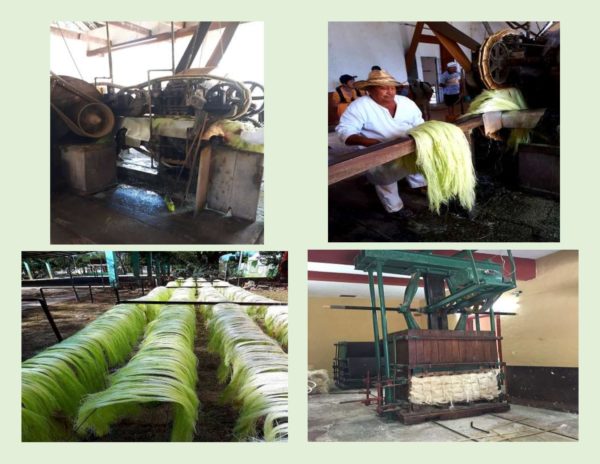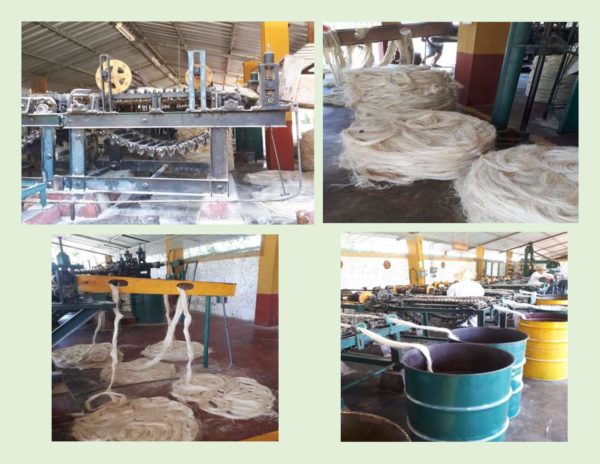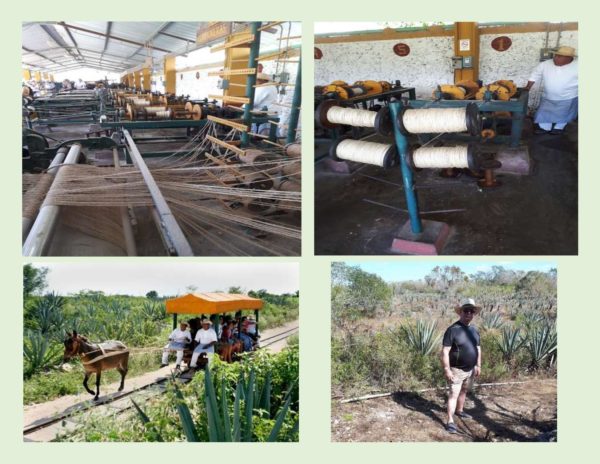The countryside around Merida, Mexico is home to many plantations or haciendas.They grew a cactus of the Agave family and processed the leaves to remove the fibers inside to make what is called a ‘sisal’ rope and other related cordage products. Although most haciendas laid abandoned for many years after the Mexican Revolution and the invention of synthetic fibers, today many have been restored and turned into luxury hotels, restaurants, museums and attractions.
On one of our day trips we went to Hacienda Sotuta de Peon. This is a restoration project focused on preserving the history of how a native plant was farmed for its fibers and made into rope. You can witness the whole process step by step; from plant in the ground, to raw material, to fibre and finished product.
This tour of the plantation was very interesting! The ‘grand hacienda’, or landowner’s home, was one, very long building. The rooms from kitchen through the bedrooms were all in a row connected by doors. The veranda ran the length of the house overlooking the pool and beautiful gardens. Sheer opulence in comparison to the conditions of the factory workers a short distance away. Over in the factory, the sisal leaves are lifted up from the street onto a conveyor belt where it is arranged by hand for maximum efficiency. Equipment, powered by a loud diesel engine, with overhead drive shafts and big leather belts, squeezed the leaves. Rivers of green pulp and liquid ran down to the carts below. The cleaned leaves came out the other side and workers made individual batches of the fibre and sent them down a rail to the room below where they would be hung out to dry in the sun.
In the next process, machinery separated short and long fibers, spun it into grade rope or baled it. When nylon and other synthetic materials were created it changed the economics of this industry. No longer able to compete they ultimately had to shut down. At the end of this part of the tour we were taken on a mule drawn, covered cart to see the fields of the sisal growing. What was interesting about the ride was that the mule pulled all of us around the plantation in this cart attached to the same rail system that was used over a century ago to transport the workers.
I’m including some of the highlights of Brion’s photos of that day for you to enjoy. In keeping with the Mexican theme, here is a tasty little recipe for some fish tacos as well.
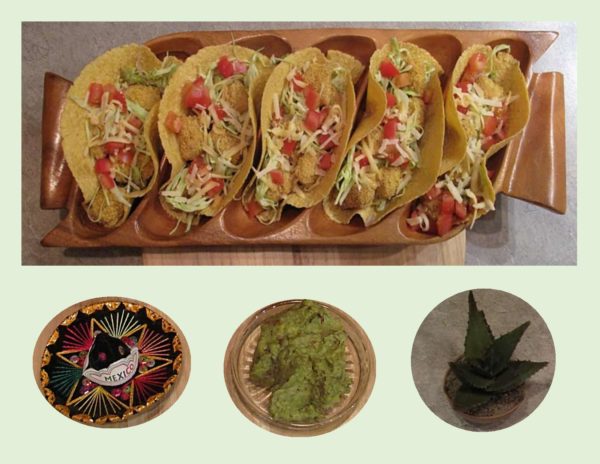
| Servings |
|
- 1/3 cup cornmeal
- 1/4 cup self-rising flour
- 1 tsp cumin, ground
- 1/2 tsp chili powder
- 1/2 tsp salt
- 1/4 tsp pepper
- 454 grams firm white fish of choice
- 3 medium avocados, pitted, peeled & cubed
- 1 Tbsp fresh lime juice
- 1/2 tsp salt
- 1/4 tsp cumin
- 1 medium tomato, seeded, chopped
- 1 clove garlic, minced
- 2 Tbsp white onion, finely chopped
- 1 tsp fresh cilantro, if desired
- 140 grams coleslaw mix
- 2 Tbsp Ranch Salad dressing
Ingredients
Fish
Guacamole
Coleslaw
Other Filling Ingredients
|

|
- Preheat oven to 375 F. Place a metal rack over a baking sheet & spray the rack with vegetable spray. Set aside. In a shallow bowl, whisk together the cornmeal, flour, cumin, chili powder, salt & pepper. Set aside. Cut fish fillets into fingers & brush with olive oil. Toss the fish fingers a few at a time into the flour mixture until well coated. Transfer fish to baking rack. Spray the top of fish lightly with vegetable spray. Bake for 15-20 minutes or until golden & cooked.

- In a large bowl, coarsely mash avocados, lime juice, salt & cumin using a fork; stir in tomato, garlic, onion & cilantro. Cover & refrigerate until ready to assemble tacos.
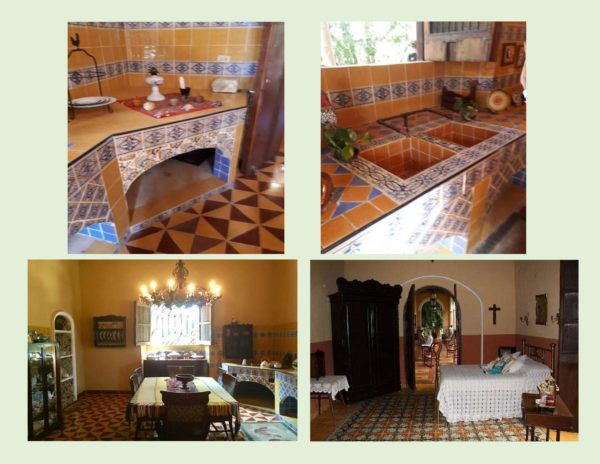
- In a bowl, combine coleslaw with ranch dressing.

- In each (heated) tortilla, place a small amount of coleslaw. Top with a couple of fish fingers, guacamole, red onion, diced tomato, grated cheese & the remainder of coleslaw. Serve any extra guacamole on the side. Of course, nothing wrong with adding a bit of salsa to the equation!
